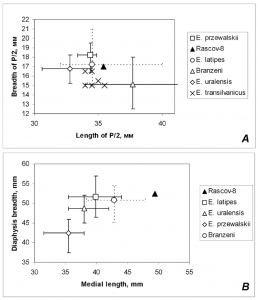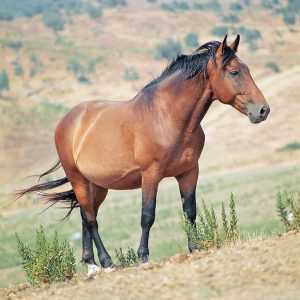Summary
The interspersed repeat content of mammalian genomes has been best characterized in humans, mice, and cows. In this study, we carried out a de novo identification of repeated elements in the equine genome and identified previously unknown elements present at low copy numbers. The equine genome contains repeats typical of eutherian mammals but also has a significant number of hybrid repeats in addition to clade-specific long interspersed nuclear elements (LINEs).
The clade-specific LINE 1 (L1) repeats of Equus caballus Recombinant can be classified into approximately five subfamilies, three of which have undergone significant expansion. There are 1115 complete copies of this equine L1s, but of the 103 presumed active copies, 93 belong to a single subfamily, indicating a recent rapid expansion of this subfamily. We also analyzed both genome-wide simple sequence repeats (SSRs) and interspersed ones, finding that some repeat classes are spatially correlated with each other, as well as with G+C content and gene density.

On the basis of these spatial correlations, we have confirmed that recently described clade-specific versus ancestral genome territories can be defined by their repeat content. Correlations of clade-specific short interspersed nuclear elements were scattered throughout the genome and appear to have been extensively remodelled. In contrast, territories enriched by ancestral repetitions tended to be contiguous domains.
To determine whether these latter territories were evolutionarily conserved, we compared these results with a similar analysis of the human genome and observed enriched domains with similar ancestral repeats. These results indicate that evolutionarily conserved territories of the ancestral mammalian genome can be identified on the basis of repeat content alone. Interspersed repeats of different ages appear to be analogous to geological strata, allowing identification of ancient versus newly remodelled regions of mammalian genomes.
Purity: >85% (SDS-PAGE)
Target names: INS
Uniprot No.: P01310

Alternative Names: SIN; Insulin [Split into insulin B chain; insulin A chain]
Species: Equus caballus (Horse)
Expression Region: 1-30
Protein Length: Cytoplasmic Domain
Label information
The following labels are available.
- N-terminus His-tagged
- Without tags
- The type of label will be determined during the production process. If you have specified a tag type, let us know and we will develop the specified tag preferentially.
Form: Lyophilized powder
Buffer before lyophilization: Tris/PBS based buffer, 6% trehalose, pH 8.0
Reconstitution
We recommend that this vial be briefly centrifuged before opening to bring the contents to the bottom. Reconstitute protein in sterile deionized water at a concentration of 0.1-1.0 mg/mL. We recommend adding 5-50% glycerol (final concentration) and an aliquot for long-term storage at -20℃/-80℃. Our final default glycerol concentration is 50%. Customers could use it for reference.
Storage Conditions
Store at -20°C/-80°C upon receipt, need to be aliquoted for multiple uses. Avoid repeated cycles of freezing and thawing.
Shelf life
Shelf life is related to many factors, storage condition, buffer ingredients, storage temperature and the stability of the protein itself. Generally, the shelf life of the liquid form is 6 months at -20°C/-80°C. The shelf life of the lyophilized form is 12 months at -20°C/-80°C.
Delivery time
The delivery time may differ depending on the way or location of purchase, consult your local distributors for the specific delivery time.
Note: All of our proteins are shipped with regular blue ice packs by default. If you request shipping with dry ice, please contact us in advance and additional fees will be charged.
Notes: Repeated freezing and thawing is not recommended. Store working aliquots at 4°C for up to one week.
